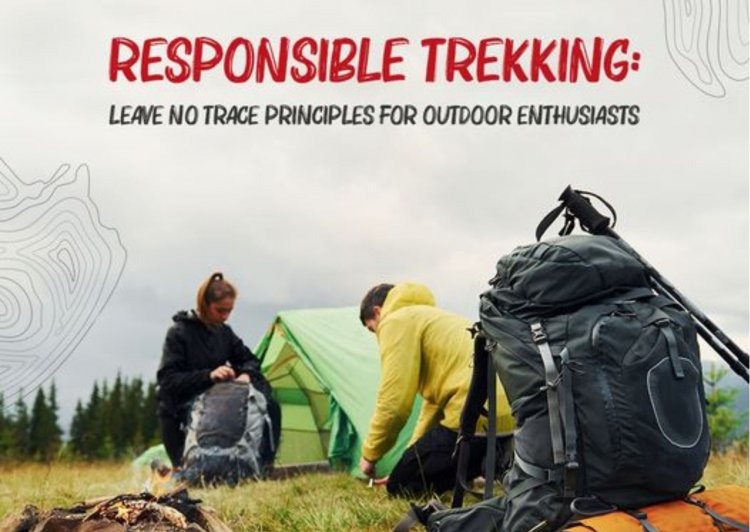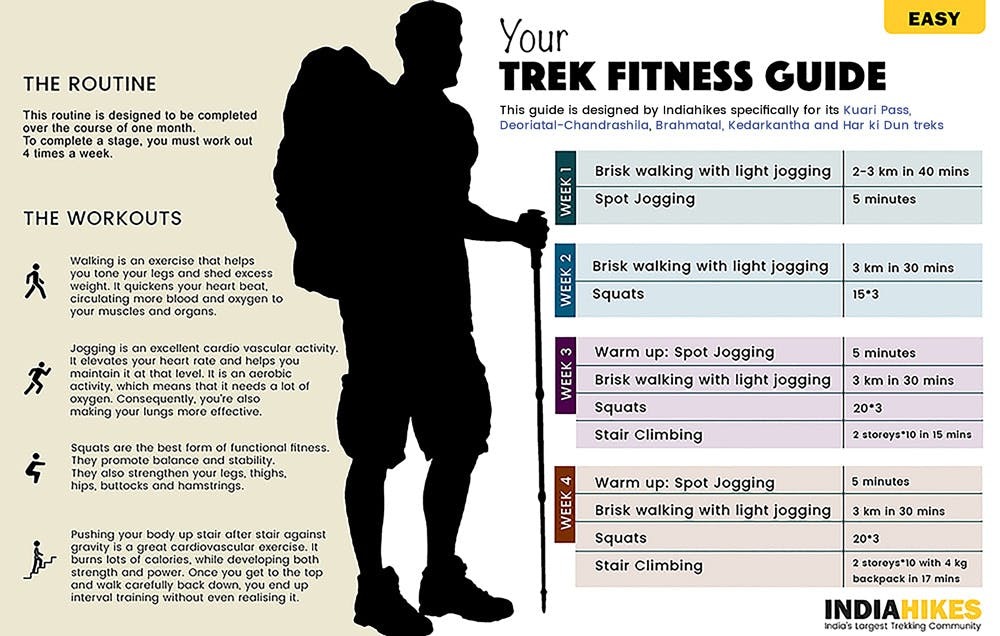
Research and Route Planning
Before you even lace up your hiking boots, research is crucial. Each Himalayan region has its own geography, difficulty level, and seasonal considerations.
Key Tips and Tricks:
- Select your trek based on your physical fitness level and experience. Beginners should consider starting with treks such as Triund, Nag Tibba, or Kedarkantha.
- Be aware of the optimal trekking seasons for your selected region. The pre-monsoon period (April to June) and post-monsoon period (September to November) are generally the best times.
- Familiarize yourself with the elevation gains. Trekking above 2,500 meters necessitates acclimatization.
- Verify the need for permits. Well-known Himalayan treks like Roopkund, Valley of Flowers, or Mount Kailash may require forest or international permits.
Physical Preparation
Gear and Packing Essentials
Backpack (40–60L) with rain cover.
Trekking shoes with good ankle support.
Trekking poles to reduce knee stress.
Clothing in layers: base layer (moisture-wicking), mid-layer (insulation), outer layer (wind/waterproof).
Gloves, beanie, sunglasses (UV protected), and a sun hat.
First-aid kit including altitude sickness medicine (consult a doctor).
Flashlight/headlamp with extra batteries.
Water bottles and portable water purifiers.
Avoid overpacking. Essentials over luxuries.
Acclimatization and Altitude Sickness
One of the biggest challenges in Himalayan treks is high-altitude acclimatization.
Ascend gradually: Don’t gain more than 300–500 meters per day.
Stay hydrated: Drink 3–4 liters daily.
Avoid alcohol and smoking.
“Climb high, sleep low” rule helps your body adapt.
Symptoms of AMS (Acute Mountain Sickness): headache, nausea, dizziness, breathlessness.
If symptoms worsen, descend immediately.
Carry Diamox but use it under medical guidance.
Nutrition and Hydration

Treks burn a huge amount of calories. Eating and drinking well is necessary.
Eat energy-dense food: nuts, protein bars, dry fruits, trail mix.
Include carbs for energy: rice, potatoes, noodles.
Avoid heavy food and junk snacks.
Stay hydrated but avoid drinking large volumes at once.
Navigating Himalayan Terrain
Himalayan treks often include forest trails, river crossings, snowy patches, and steep ascents.
Use a trekking pole during ascents and descents.
Walk in a rhythm and take small steps.
Keep to the trail; off-trail walking can be dangerous.
Watch for loose rocks and slippery patches.
In snow or rain, move slowly and plant your feet firmly.
Tips and Tricks for Safety and Emergency Measures
Safety should always be your top priority.
Always inform someone about your trekking plan and expected return.
Carry a whistle, mirror, or emergency flare.
Download offline maps and carry a GPS or compass.
In group treks, don’t leave your team.
Know basic first-aid and CPR.
For remote treks, satellite phones or GPS beacons (like Garmin InReach) can be lifesavers.
Environmental Responsibility
The Himalayas are ecologically sensitive. Trekking responsibly ensures their beauty remains intact for future generations.
Tips and Tricks
Follow Leave No Trace (LNT) principles.
Carry reusable bottles and avoid plastic.
Don’t disturb wildlife or pluck plants.
Use eco-friendly toiletries.
Respect local customs and avoid loud behavior.

Travel and Stay Logistics
From getting to the base camp to finding stay options, logistics are key.
Check public and shared transport options.
Book accommodation in advance during peak season.
Consider homestays for cultural exposure.
Always carry extra cash; ATMs are rare.
Mental Readiness
Trekking can be physically tiring and mentally challenging.
Accept weather uncertainties, basic amenities, and exhaustion.
Practice meditation or breathing exercises to stay calm.
Enjoy the journey, not just the destination.
Trekking in the Himalayas is one of the most fulfilling adventures one can undertake. With the right preparation, gear, and attitude, you can conquer trails, connect with nature, and create lifelong memories. Remember — the mountains are not to be conquered but to be respected. Stay safe, stay humble, and trek mindfully.
Ready to step into the mountains?

